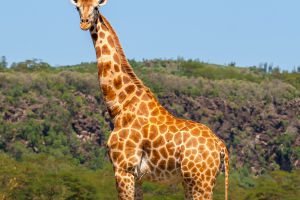In ancient Africa, a beautiful and unique animal known as the zebra roamed the vast grasslands and bushes. With a dark snout, lively ears, and a striking black and white striped pattern, zebras were known for their unforgettable appearance.
They lived in groups and were a sight to behold in the African savanna.
Zebras get their name from the distinctive protective stripes on their bodies. No two zebras have the same stripe pattern, much like human fingerprints. These stripes help to protect zebras from predators and make them one of the most recognizable animals in the world.
They are herbivores and consume grass, shrubs, twigs, leaves, and even bark. Zebras have a highly adaptable digestive system that enables them to survive in low-nutrient conditions, making them superior to other herbivores in the African savanna. Unlike horses, zebras have never been domesticated or crossed with horses.
Zebras are notoriously difficult to tame and domesticate. They have evolved excellent early warning mechanisms, such as superior peripheral vision compared to other equines. They are often short-tempered and become increasingly antisocial as they age. A zebra bite can be dangerous, and a kick from a zebra can even be fatal to a person.
Zebras' stripes play an important role in their survival in the wild. In open grasslands and deserts, the dark brown and white stripes reflect light differently under sunlight or moonlight, making it difficult for predators to distinguish them from the surrounding environment.
Their stripes also help to blur their body shape and distract predators, providing an additional layer of protection.
Besides their unique appearance, zebras have a lot of other interesting characteristics. They are very social animals and often form large groups with other species to migrate or find food. Zebras communicate with each other in various ways, including wiggling their ears, opening their mouths to show their teeth, and making specific calls.
However, despite their fascinating characteristics, zebras face many challenges today. Their habitats are being destroyed, and they are often hunted by humans. Furthermore, diseases and parasites threaten their survival in the wild. Therefore, we must take action to protect their natural habitats and ensure that they can continue to thrive in the wild.
In conclusion, zebras are an exceptional species of equine that possess unique characteristics that make them stand out from other animals. They are highly adapted to their natural habitats and play an essential role in the African savanna's ecosystem.
To preserve their existence, we must take active measures to protect their habitats and reduce human interference in their natural lives. By doing so, we can ensure that zebras continue to thrive in the wild and remain a beautiful sight to behold for generations to come.


